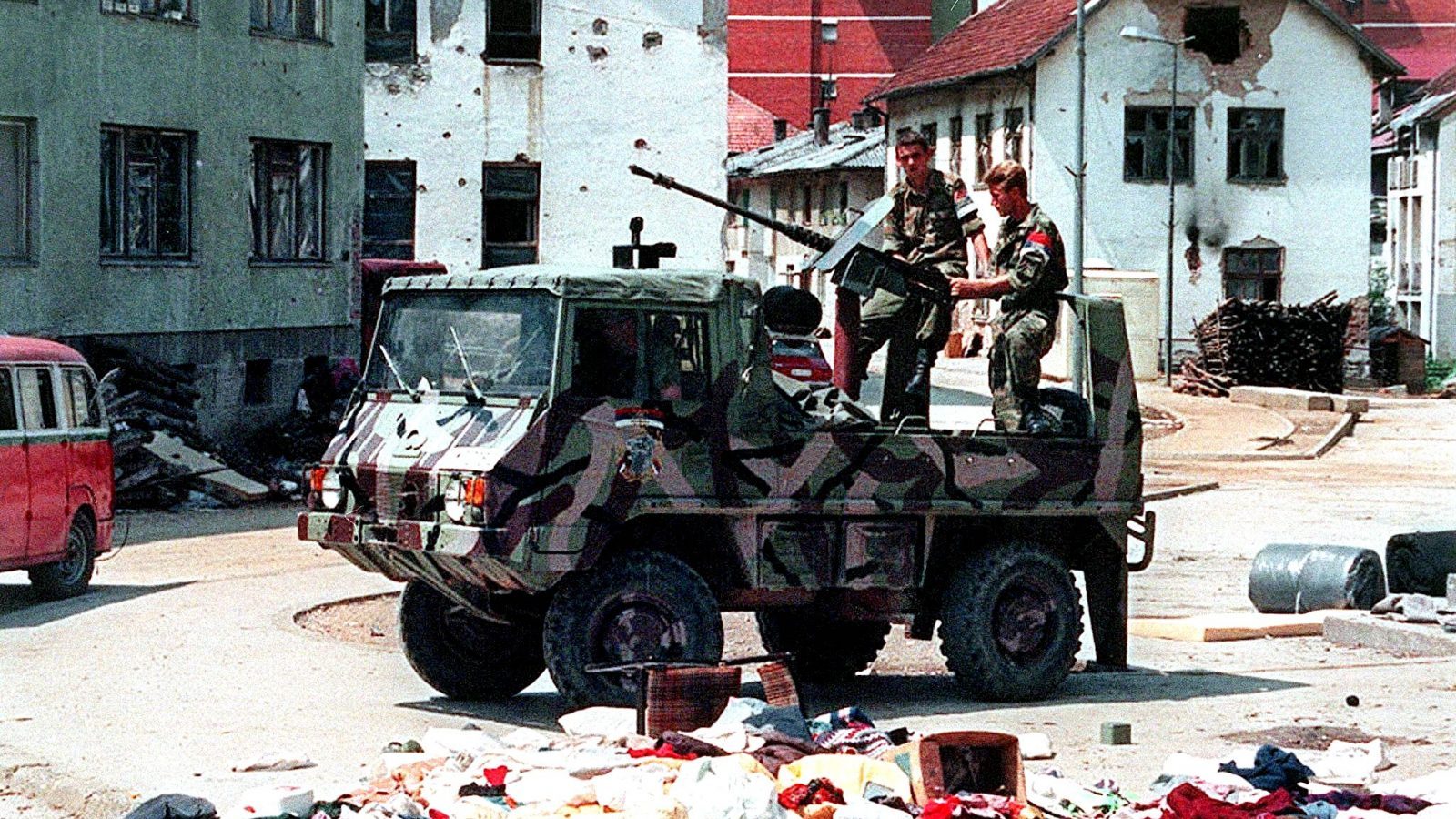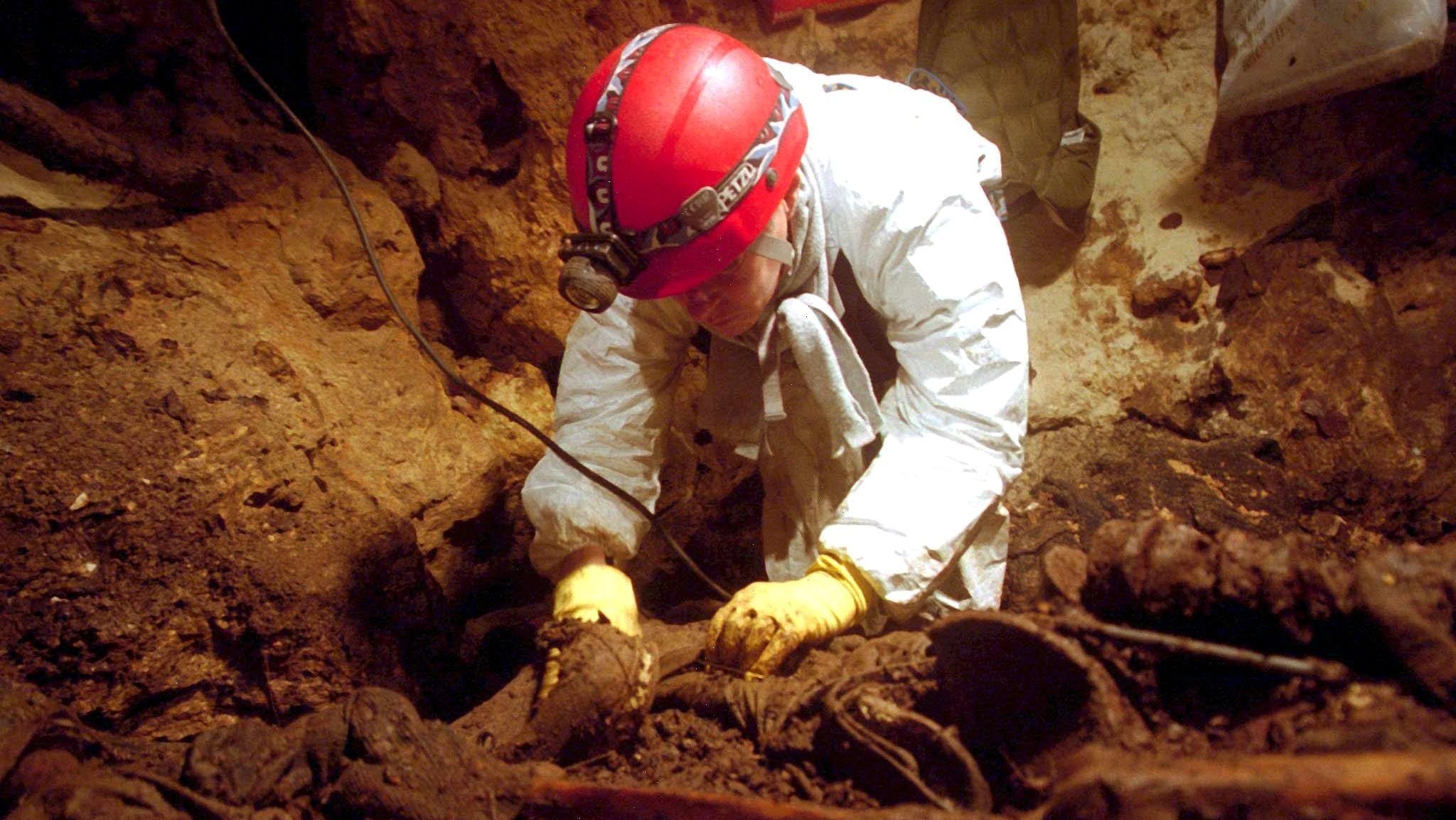This post is also available in: Bosnian
But the sexual enslavement of women and girls in the 1990s Bosnian war, although it has all the elements of trafficking, has never been discussed in the same context.
Research for a new report entitled ‘Sexual Enslavement in the War in Bosnia and Herzegovina and Its Links to the Contemporary Concept of Trafficking in Persons’ examined verdicts from trials held at the International Criminal Tribunal for the Former Yugoslavia, ICTY and at domestic courts in Bosnia and Herzegovina and Serbia.
The research examined cases of sexual enslavement in the war in Bosnia and Herzegovina in the context of human trafficking for the purpose of sexual exploitation, since these two phenomena have many common characteristics. Cases of human traffickers convicted in Serbia between 2005 and 2018 were analysed to find out whether the defendants had also participated in any war crimes.
First conviction in The Hague
 Dragoljub Kunarac at the United Nations War Crimes Tribunal for the former Yugoslavia in The Hague, 09 March 1998. EPA PHOTO ANP-POOL/JASPER JUINEN.
Dragoljub Kunarac at the United Nations War Crimes Tribunal for the former Yugoslavia in The Hague, 09 March 1998. EPA PHOTO ANP-POOL/JASPER JUINEN.
There are various estimates on the number of women and girls who experienced some form of sexual violence during the Bosnian war, ranging from 20,000 to 50,000.
In terms of conflict-related sexual violence, the Bosnian war is also known for so-called ‘rape camps’ and other forms of sexual slavery which sometimes involved effectively forced marriages, as well as forced pregnancies, a phenomenon which has been significantly less examined. As none of the female victims exercised any control over their lives, their position can be considered slave-like.
The best-known case, and also the first judgment handed down by the ICTY that treated sexual enslavement and rape as crimes against humanity, was in the trial of Bosnian Serb Army commander Dragoljub Kunarac and his subordinates Radomir Kovac and Zoran Vukovic.
After the takeover of the eastern Bosnian town of Foca by Bosnian Serb forces in the spring of 1992, Bosniak men were detained in the local prison, while women and children were held at various locations and repeatedly raped.
They were also occasionally taken by soldiers to other private houses and flats, where they were raped, sexually exploited and abused. Some of the female victims were as young as 12 and 15. The perpetrators also sold three of these women and girls to other soldiers.
In Serbia, crimes amounting to sexual enslavement were included in the Skocic case, which was prosecuted by the War Crimes Department of the Higher Court in Belgrade. In the case, Serb paramilitaries from the Sima’s Chetniks unit were charged with destroying a local mosque 1992 in Skocic, a village near the eastern Bosnian town of Zvornik, and killing 27 Roma civilians.
The indictment said that three women, two of whom were 13 and 15 years old, were also kept effectively enslaved by the paramilitaries; forced to cook, clean houses, wash soldiers’ uniforms and do whatever they were told under the threat of murder. At the same time, they were severely beaten, raped and sexually humiliated. Three other girls who had been captured earlier in the war were kept under similar conditions. Three of the six victims married their captors.
Elements of sexual slavery were included in the Court of Bosnia and Herzegovina’s judgments convicting Croatian Defence Council member Josip Tolic of the inhumane treatment and murders of Serb civilians in detention facilities in Odzaci and Bosanski Brod in northern Bosnia. Tolic was also found guilty of taking several Serb women from one detention facility and raping them.
Perpetrators claim that victims consented

What do these cases have in common? Firstly, none of the accused initially confessed to these crimes. The defence usually insisted that the victims consented and that the perpetrators did not force them to have sexual intercourse.
Some defendants claimed that they were in a relationship with the victim while keeping them in captivity. Kunarac even claimed that the woman he raped actually seduced him.
The most extreme outcomes of this sort of sexual exploitation were (forced) marriages between the rapists and victims, as in the Skocic case.
When compelled to admit that ‘contacts of a sexual nature’ occurred, the perpetrators claimed that this was not violent, but consensual. They further argued that the victim’s allegations resulted from her being manipulated by the prosecution – within the broader discourse of presenting war crimes prosecutions as a witch-hunt targeting the perpetrator’s specific ethnic group – or that the claims were made by the plaintiff because she was inherently evil.
Sexual exploitation rarely came alone; it was combined with the labour exploitation of sexually abused women, who were required to clean, cook, do laundry and other tasks while in detention.
Many Muslim Bosniak women were forcibly ‘baptised’ as Orthodox Christian, or their names were formally or informally changed to Serb names.
The defence usually tried to question victims’ credibility using tactics such as alleging they were promiscuous in the period before or after the offence as proof that they consented to the sexual abuse. However, rule changes apparently adopted to follow the ICTY’s practice mean that questions about victims’ previous sexual experiences are no longer allowed at the Court of Bosnia and Herzegovina.
But although the Court of Bosnia and Herzegovina adopted the ICTY’s approach, it continued to allow questions about victims’ sexual behaviour after the crime was committed. Defence teams used this to perpetuate stereotypes of ‘ideal victims’ who look and act in specific ways, intimating that if they do not fit the ideal, their suffering should not be recognised. Defence teams for trafficking perpetrators have used similar strategies.
Links between war criminals and trafficking

There are a few documented cases of the subsequent involvement of convicted war criminals in Bosnia in the trafficking of human beings.
Interestingly, judgments in cases for one type of offence do not mention the convictions for the other type of offence. This goes against courts’ standard practice, which is to list previous convictions in judgments, with their absence or presence acting as mitigating or aggravating factors when the sentence is decided.
For example, Stanko Savanovic, alias Geza, was arrested in 2003 as a member of a criminal gang led by Milivoje Zarubica, nicknamed Puja, who was described by media at the time as “the Balkan master of human trafficking”. Zarubica and his accomplices were recruiting women, mostly from Moldova, tricking them with attractive job offers that did not involve sex work and transferring them via Serbia to Italy, where they were forced into prostitution.
In Serbia, Zarubica and his gang were never convicted of trafficking because it had not been criminalised at the time of the offence. Instead, gang members got symbolic prison sentences for a variety of crimes, including facilitation of prostitution, rape, document forgery and depriving people of their liberty.
He then changed his surname from Savanovic to Kojic, and in 2010, found himself in detention in Bosnia. In 2012, the Court of Bosnia and Herzegovina convicted him of involvement in the commission of genocide in Srebrenica when he was a member of the Bosnian Serb Army’s 10th Reconnaissance Division, along with co-defendants Franc Kos, Vlastimir Gorijan and Zoran Goronja.
In 2010, Sasa Lipovac was arrested in Georgia on his way to Moscow based on a request from the Court of Bosnia and Herzegovina. He was travelling back from Azerbaijan, where he had spent a couple of years operating as a part of a group involved in trafficking for labour exploitation.
The victims were construction workers, some 700 of them, mainly from Bosnia, but also from Serbia and North Macedonia. In February 2017, following a plea agreement, the Court of Bosnia and Herzegovina sentenced Lipovac to a year and nine months in prison.
The warrant for the arrest of Lipovac was issued in 2008 when he failed to appear before the Supreme Court in Banja Luka in second-instance proceedings relating to a war crime against Bosniak civilians in the village of Liskovac near Gradiska in northern Bosnia.
In August 1993, Lipovac, together with four other people, went to Liskovac and brutally killed three members of the Rizvanovic family, wounded a four-year-old and raped a 20-year-old woman several times. After that, the men shot the woman and her son in the head. For these crimes, the Supreme Court of Republika Srpska sentenced Lipovac to ten years and six months in prison.
Courts focus on sex, not violence

Sometimes, prosecutions have not included sexual violence charges in their indictments in order to focus on ‘larger’ crimes, as in the case of Bosnian Serb paramilitary leader Milan Lukic.
The ICTY sentenced Lukic to life in prison for large-scale war crimes and crimes against humanity committed against Bosniak civilians in the town of Visegrad in 1992. But the Hague prosecutors decided not to try him for his role in committing rape and other crimes of sexual violence against women who were detained by his paramilitaries at a hotel near Visegrad.
Meanwhile, perpetrators and official bodies in former Yugoslav countries have denied, minimised or relativised sexual crimes committed during wartime. Such crimes are seen as particularly ‘dishonourable’ and do not fit into the heroic discourses that have been created around the wars.
Although women and girls were the principal victims of sexual violence in the wars in Bosnia, Croatia and Kosovo, many incidents of sexual violence against men and boys have been recorded, documented and prosecuted alongside other war crimes.
However, sexual violence against men is still taboo, both for rapists and victims because prosecutions and courts focus on the sexual aspect rather than the violence involved in the crime – and while the judiciary continues to focus in an unnecessarily humiliating and damaging way on these sexual aspects, victims will continue to be ashamed to talk about what they suffered.
Because they will be questioned about whether they ‘encouraged’, ‘consented to’ or ‘enjoyed’ the assault, victims will also continue not to report such crimes or abandon their attempts to seek justice.
Before the ICTY started operating, crimes of sexual violence during wartime were not prosecuted by domestic courts.
But despite progress in prosecuting and punishing such crimes, research shows that although numerous perpetrators have been tried, many have not.
Victims’ testimonies and transcripts of the trials of men who raped sexually-enslaved women contain many names of individuals who have not been brought to justice – suggesting that more connections between perpetrators of wartime sexual violence and crimes involving trafficking might still be undiscovered.
Ivana Radovic is a researcher from Belgrade, Serbia. This article is a summary of a research report that was produced in cooperation with BIRN. The full report can be found on this link.
The article and the research report were produced as part of BIRN’s Balkan Transitional Justice grant scheme, supported by the Matra Regional Rule of Law Programme.



